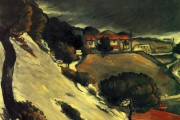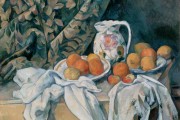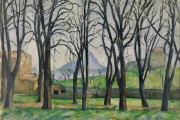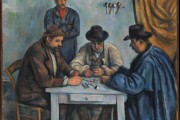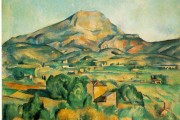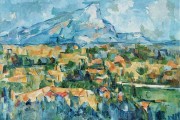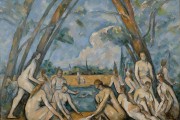
Cézanne, lonely master, ready to get excited about a flash of light, was described by Gauguin as a “man coming from the South, who spent his days on the top of the mountains reading Virgil and looking at the sky” in light of his passion for the classics.
It was Pissarro that first taught the young comrade to consider nature as the only master by trying to transcribe the effects of light through the en plein air technique. Pissarro also spurred him to take black, ochre and sienna pigments away from his palette, forcing him to use a brighter range of colours. “Use only the three primary colours and their direct derivates” was his teaching.
He pushed him to observe nature scrupulously and to transfer only what he felt and saw on the canvas, without adding any interpretation or elements that were of his fantasy. Therefore, Cézanne became a conscientious observer of reality. He constructed and defined forms through shades of colour and small brush strokes, as he was capable of absorbing every information without focusing on a peculiar detail at a time, thus simultaneously painting sky, water, earth and branches.
However, Cèzanne gradually started to move away from an impressionistic dimension of reality, which he considered too fleeting and rooted in the instant. His aim was to deeply penetrate the heart of nature in order to seize what was immutable. He would work on the same painting for months. He used to observe the subject for a long time by doing a “meditative walk” to capture the essence of it, concluding that there is something beyond what we see, hence some kind of structure inside nature that withstands it, a geometrical structure.
“My will is to reconstruct the world through the cylinder, the sphere” was his motto, which was later echoed by Picasso. Being true to nature did not mean to Cèzanne a mere imitation of it. “We must not be pleased with reality itself, we must give structure to reality, rearranging it through a process of re-composition. We must readapt it to our rules of composition”.
The process of observation then becomes a foundation for the rearrangement of the chaotic energy of the visible, producing a reduction of information. This will later become the precursor of the deconstruction of form and perspective. “Cèzanne broke the fruit bowl” said the painter Robert Delaunay, “and we won’t stick the pieces back together”. This statement clearly states how Cèzanne was the visionary pioneer of a long artistic period, that will result in Abstractionism after having gone through Cubism.

